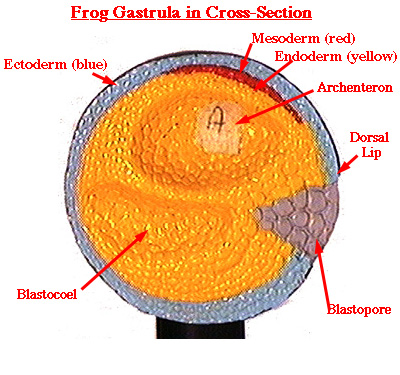
The mode of action of inductors and the actual chemical nature of inducing substances are incompletely known. It involves the transfer of chemicals from the inducing to reacting tissues.Ĭhemical Nature of Inducing Substances : The inductive phenomena that occur in all the cases suggest beyond doubt that induction can occur without cell contact and inductive agent is chemical. Similar experiments with epithelio-mesen-chymal interactions in the differentiation of kidney, pancreas, salivary gland, thyroid and thymus glands, etc., also suggest this ‘transfilter phenomenon’. The filter paper prevents the transfer of cells but permits diffusible chemical substances of low and high-molecular weight. As the implanted material contains no cells-the question of surface interaction of cells at the inductive interface becomes impossible.īesides, if a portion of presumptive embryonic ectoderm and a piece of dorsal lip of blastopore are kept separated in a culture medium by a millipore filter paper of 20 micra thick with an average pore size of 8 micra, the ectoderm develops into a neural structure. Many chemical substances suspended in egg albumen (an inert substance) can induce neural tissue when introduced into the blastocoel of early gastrula. Most of the experimental evidences on this line suggest the existence of chemical mediation between the inductor and induced structures. 35% sodium chloride solution as shown by Holtfreter in Exogastrulation Experiment, the dorsal ectoderm that normally becomes neural tube forms the ectodermal vesicle. If the invagination is prevented by treatment of the amphibian blastula with a solution of 0. The development of amphibian neural plate has shown that the dorsal lip of the blastopore invaginates inside the embryo and induces the dorsal ectodermal layer to form the neural structure. The foregoing discussion suggests that the commitment of a particular tissue to a particular developmental fate depends generally on the relationships established with surrounding tissues. This experiment demonstrates that the neural tissue of the secondary embryo is entirely formed from the tissues of the host-thus suggesting the fact that the dorsal lip of the blastopore is not only the controller of development but also acts as an instigator to induce the host tissue to differentiate. They used the dorsal lip of the blastopore of Triton cristatus (Nonpigmented) as the graft to an embryo of Triton taeniatus (Pigmented) of the same age. 5.22 demonstrates the formation of a secondary head as a result of grafting the dorsal lip of the blastopore. Spemann and his student, Mangold, by using a transplantation technique, have shown that the dorsal lip of the blastopore, when implanted to the ectodermal area of the same or another embryo at that stage of development, the dorsal lip is able to initiate the formation of a secondary embryonic axis.įig. The dorsal lip region is called the chorda-mesoderm because it develops normally into mesoderm and notochord. In normal amphibian development the dorsal ectoderm just above the dorsal lip of the blastopore becomes the neural structure.

During gastrulation, the potencies of ectoderm become limited from general to specific one. The ectoderm in early gastrula remains in an undifferentiated stage, i.e., it has manifold potencies at that stage. These experimental studies have revealed that the grey crescent material of the egg gives rise to the dorsal lip of the blastopore in early gastrula.īut in the late stage, i.e., when the gastrula transforms into an embryo, the grey crescent materials become localised in the head endoderm of the primitive gut.ĭorsal Lip of Blastopore and its Significance: The vital dye method and other marking devices, such as carbon particle technique and radioactive labelling method have been applied to ascertain the fate of grey crescent during development.

Similar operation of removal of grey crescent from the egg prior to cleavage has shown that the process of cleavage remains unaltered, but gastrulation does not occur. The same operation if performed on an egg in which one half gets the entire grey crescent, while the other blastomeres lack the grey crescent material and the two blastomeres when cultured in isolation, the blastomere which is devoid of grey crescent will develop a simple sac of ectoderm containing endoderm, while the blastomere having the grey crescent will form an entire embryo.


 0 kommentar(er)
0 kommentar(er)
